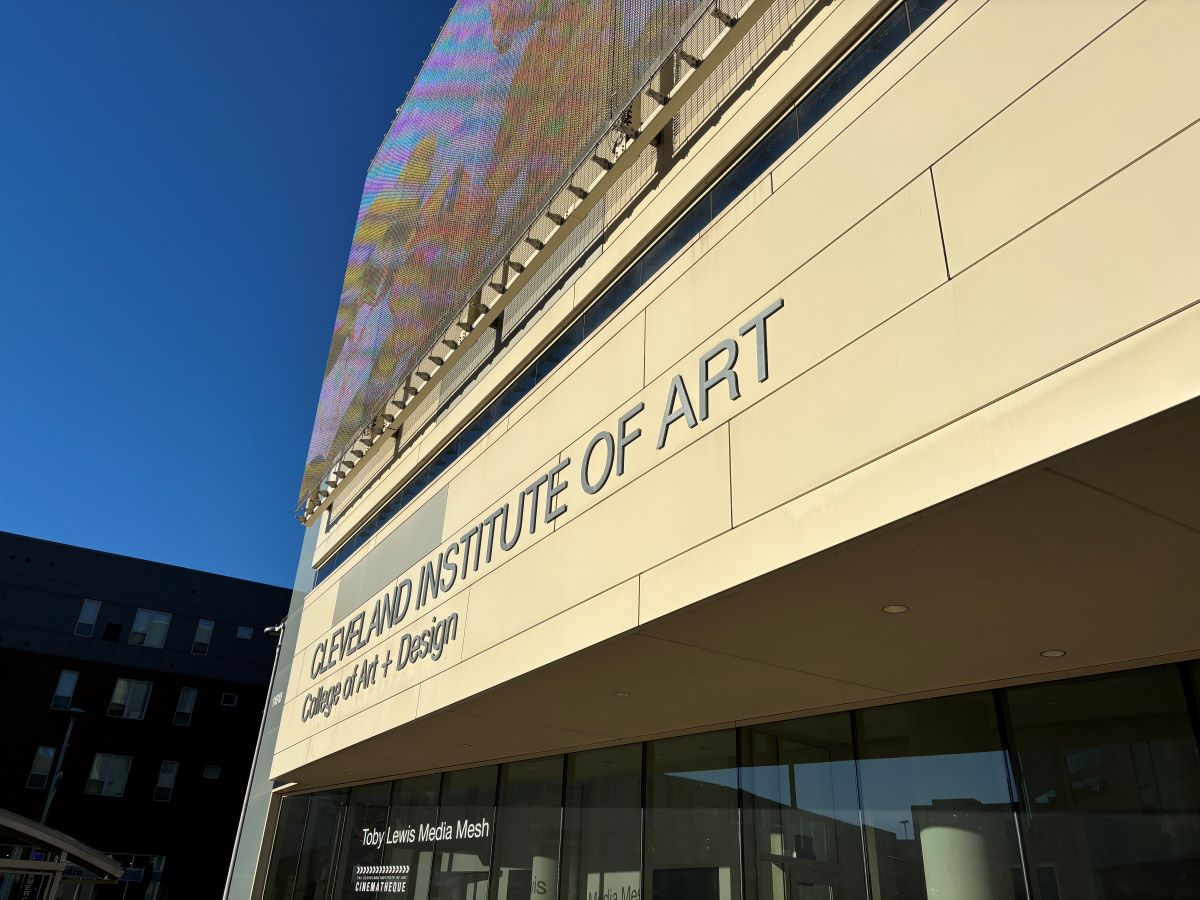
Until this year, nearly every film ever made had a single thing in common. One rule that every film had to follow. Then a few years back, director Gary Hustwit had an idea. An innovation. Something that had never been tried, because until recently, it even wasn’t possible. Now a music documentary has been made that’s like no movie ever made before.
The documentary premiered in January, but has fanned out slowly across the US. It finally arrived in Cleveland at the Cinematheque, the art-house theater inside the Cleveland Institute of Art. For one night only, moviegoers would be treated to a screening of the film.
What we saw, may have been the only time that version of the film was ever shown.
Curious? Apparently quite of a few of us in Cleveland were. To get to the Cinematheque, one has to travel to the eastern edge of the city, past the blocks of hospitals, around the art museum, and stop just short of Little Italy. I’d never been inside the art institute, but one had to bypass the students collected in the main hall, then follow the curved glass hallway to the theater in the back. There mixed in with an upcoming foreign language premiere, and a horror revival, was a poster for Hustwit’s music documentary.
A film called Eno.
As in Brian Eno, ‘the hugely influential British musician, producer, activist, visual artist and self-described “sonic landscaper”’, according the the film’s website. Which sounds about right. Brian Eno was a early member of the glam rock band Roxy Music, but went on to work in the studio with artists such as David Bowie, Talking Heads, and U2. He helped them create some of their most groundbreaking work. He earned reputation for taking musicians in a new artistic direction. Put simply, Eno makes a great subject for a music documentary.
Except that Brian Eno initially turned the director down.
When Hustwit asked Brian Eno if he’d be the subject of the new project, Eno had little interest in the stale format of the music documentary. A worn out genre, known for grainy archival band footage and cut-away interviews with gray-hair rockers past their prime.
As director, Hustwit had to explain to Brian Eno what he was up to. This would be the first movie of its kind to use generative technology. A format that would produce a new version of the film every time it was shown. Suddenly, Brian Eno was intrigued.
Version? Yes, because the film creates a new order of its scenes each time its shown. It selects from a library of material, and using some undisclosed algorithm it generates a new film. It’s an experience that leaves the view guessing. What is it showing me? What’s being left out. Is it random, or does it know what story it wants to tell?
Pretty cool idea.
After a long career and many documentaries, Hustwit approached a developer about creating the software to manage such a film. Hustwit smashed the assumption which we took for granted until now. Every film had a set format, because film–the actual photographic process for capturing moving images was linear. It could only be shown in the order that unspooled off its reel.
Now Hustwit has freed us of that constraint.
There was some excitement and buzz in the theater as the movie played. But it wasn’t until the short interview after the film that we could stop and compare. It was clear that the version shown while Hustwit was being interviewed had excluded scenes that we’d viewed in Cleveland. He actually struggled to make a point about Eno, one that we could understand, having watched our version. Which was the purpose of the whole project. Each time will be different than the time before.
You can imagine the possibilities. Generative filmmaking is here, and ready to explore. Yet no one had taken the creative risk until now.
Not until Gary Hustwit created Eno.
